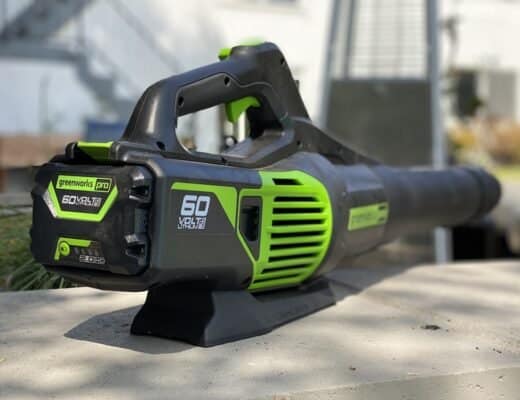The realm of cordless power tools is witnessing a significant transformation with the advent of stacked pouch cell batteries, a technology that’s rapidly gaining momentum.

Industry leaders like Milwaukee, DeWalt, and Flex are at the forefront of this innovation, each introducing their unique versions of these batteries. However, the question looms: Are stacked pouch batteries the definitive future of the cordless power tool industry, or will they coexist with other emerging technologies?
Milwaukee Tool’s Forge Line and the M18 Pouch Battery
Milwaukee Tool’s recent announcement of the first M18 pouch battery, a 6Ah battery under their new Forge line, marks a significant step in battery technology. The M18 Forge 12Ah battery is also noteworthy, built using new tabless cylindrical Li-ion cells. These developments underscore that advancements are still very much possible with the older cylindrical cell form factor.
DeWalt’s PowerStack 5Ah Battery
DeWalt has launched two sizes of 20V Max pouch cell PowerStack batteries – a compact 1.7Ah battery, and a more substantial 5Ah battery. This move by DeWalt indicates a strong commitment to the pouch cell technology, catering to a range of power needs.
Flex’s Pouch Cell Batteries and CAT’s Graphene 5Ah Battery
Flex offers three pouch cell 24V Max batteries – 3.5Ah, 6Ah, and 10Ah, illustrating the versatility of the pouch cell design. CAT, made by Positec, has also entered the fray with a “Graphene” 5Ah battery, adding another dimension to the competitive landscape.
Milwaukee’s High Output M12 Batteries and Tabless Cylindrical Cells
Milwaukee’s introduction of new High Output M12 batteries, alongside their use of tabless cylindrical cells for the upcoming M18 Forge 12Ah battery, suggests a strategic approach that balances new and traditional technologies. The choice of tabless cylindrical cells over pouch cells for reasons related to performance and cooling indicates a nuanced understanding of technology application in power tools.
Makita’s Position and Potential Shifts in Battery Technology
Makita’s current stance in the market, particularly their hesitance to introduce higher capacity or output batteries in their 18V line, raises questions about the potential impact of pouch cell batteries on their product strategy. The possibility of moving to tabless batteries, with minimal deviation from their existing battery pack shapes and sizes, presents an interesting avenue for exploration.
The Role of Bosch, Ryobi, Metabo HPT, Metabo, Kobalt, Festool
Other major players like Bosch, Ryobi, Metabo HPT, Metabo, Kobalt, and Festool have yet to make significant moves in the pouch cell battery arena. Their strategies and potential developments in this space remain a topic of keen interest.
The Future Landscape: Pouch Cells, Cylindrical Cells, and Beyond
The future of the cordless power tool industry seems to be one of coexistence and competition between different battery technologies. While pouch cell batteries offer distinct advantages, cylindrical cell technology, especially with innovations like tabless designs, still holds potential for growth and improvement.
Milwaukee’s diverse range of batteries – standard, High Output, Forge pouch, and Forge tabless – exemplifies the industry’s trend towards a varied battery ecosystem. This diversity allows for greater flexibility and choice for users, accommodating different tool requirements and preferences.
Pouch cell batteries are indeed shaking things up in the cordless power tool industry, but they represent only a part of the evolving landscape. As we look ahead, it’s clear that these batteries will play a major role, yet they will share the stage with other advancing technologies, including new forms of cylindrical cells.
The future of cordless power tools is not a single-technology race but a multi-dimensional arena where various innovations contribute to the industry’s growth and evolution.



